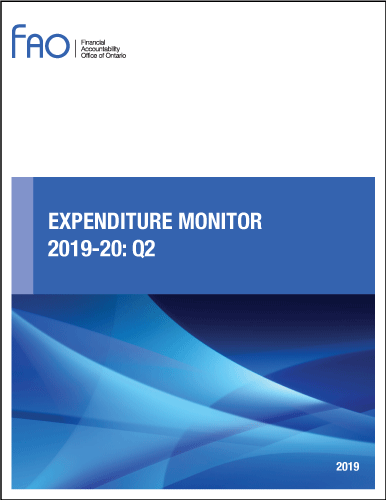Expenditure Monitor 2019-20: Q2

The Expenditure Monitor is a new type of report, and the first of its kind from the FAO, intended to assist Members of Provincial Parliament track provincial spending and changes to program budgets over the course of the year.
Expenditure Monitor 2019-20: Q2, Financial Accountability Office of Ontario, 2019.

